Leeds castle, in Kent, hosted a spectacular jousting tournament over the spring bank holiday. We sent historian Amanda Glover to visit the event and tell us all about it. Over to Amanda...
 The castle is always a beautiful backdrop for any event, but it was particularly fitting for the mediaeval drama.
The castle is always a beautiful backdrop for any event, but it was particularly fitting for the mediaeval drama.
We were informed that this was the real thing, implying perhaps that some other jousting tournaments may be rather too staged managed. The English were competing against the French, and indeed the contest seemed real enough.
Twice a day, for three days, the Knights in full armour mounted on beautifully caparisoned horses, charged at each other down the list, separated by the tilt -a wooden barrier which afforded some protection to horse and rider.
The aim was to strike the opponent’s targe- a small shield attached to the breastplate or failing that to make contact with the knight him or herself, (yes- in the 21st century we have female jousters- the Knights of yore would be turning in their graves!) and to smash one’s lance in the process. The most points were awarded for a clean strike on the targe, breaking the lance low down its shaft, which indicated higher impact than merely splintering the top.
Of course, modern health and safety regulations, not to mention common sense, precluded the knights from using the hugely heavy reinforced jousting armour of their forebears and the very stout lances which could on occasion unseat an unlucky opponent, or otherwise do some rather unpleasant damage.
 Despite this, it was still a colourful and skilful spectacle, and many a light-weight lance was splintered, with no nasty injuries to horse or rider.
Despite this, it was still a colourful and skilful spectacle, and many a light-weight lance was splintered, with no nasty injuries to horse or rider.
Although this was the main event, there was other entertainment on hand. This included a demonstration as to how to arm a knight-it is a complex process putting on all that steel, and there was a daily exhibition of foot combat.
A 15th century encampment included some music makers, an armoury workshop, a kitchen and the odd gift shop selling mediaeval style belts, pilgrims’ badges and pottery, all the participants being suitably attired.
The kitchen was of particular interest, with food being prepared just as it was all those centuries ago. We were given tastes of saffron bread and bread pudding, tasty treats that only the wealthy could have afforded in the 15th or 16th century. The price of saffron and dried exotic fruit made it out of the reach of the average peasant. Very crunchy authentic mediaeval gingerbread was for sale, and it was indeed a tasty treat.
Then there were samples of hippocras, a delicious early form of mulled wine, made with all sorts of rare herbs and spices, which no self-respecting mediaeval banquet omitted from its menu.
Combined with the castle itself, its beautiful grounds and its maze, it was well worth the day out.



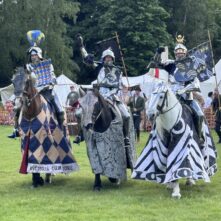
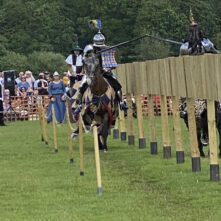

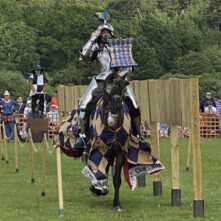
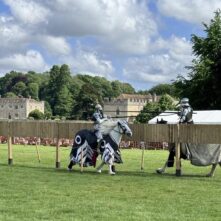
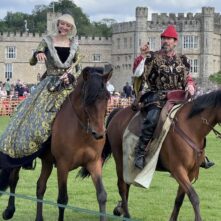




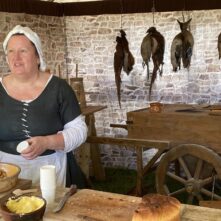
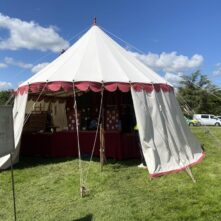






Leave a Reply